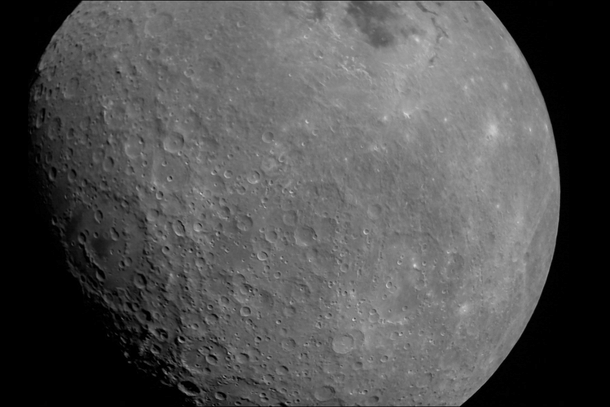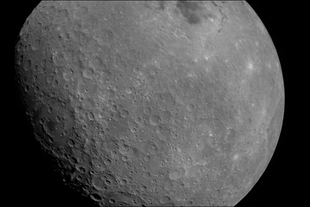Science
Chandrayaan-1 Data Reveals Earth's Electrons Contributing To Water Formation On Moon
Nayan Dwivedi
Sep 15, 2023, 03:43 PM | Updated 03:40 PM IST
Save & read from anywhere!
Bookmark stories for easy access on any device or the Swarajya app.


Scientists have used data from the Chandrayaan-1 mission to explain why there is water ice in the shadowy parts of the Moon.
They think that high-energy electrons from Earth's magnetic field play a role in making water on the Moon's surface.
Earth has a protective shield called the magnetosphere, which helps shield us from space weather and solar radiation.
The magnetosphere is affected by the solar wind, which pushes it into a tail shape on the night side, similar to how a comet's tail looks.
Within this tail is something called the plasma sheet, containing high-energy particles from both Earth and the solar wind.
Researchers wanted to see if this plasma sheet had an impact on creating water on the Moon's surface. They discovered that the Moon's magnetotail doesn't have a big effect on forming lunar water.
This means there might be other ways water is made on the Moon, not just from solar wind particles.
Even when the Moon is inside the magnetotail, where there are fewer solar wind particles, water formation remains unchanged. This suggests that there are different processes or sources of water not directly related to solar wind particles.
Scientists used data from the Moon Mineralogy Mapper on the Chandrayaan-1 mission to study these changes as the Moon moved through Earth's magnetotail.
They found that the magnetotail doesn't have a huge impact on how water forms on lunar surface.
This discovery raises questions about where lunar water comes from and how it's made, and it opens up new opportunities to study water on celestial bodies beyond Earth.
Nayan Dwivedi is Staff Writer at Swarajya.




